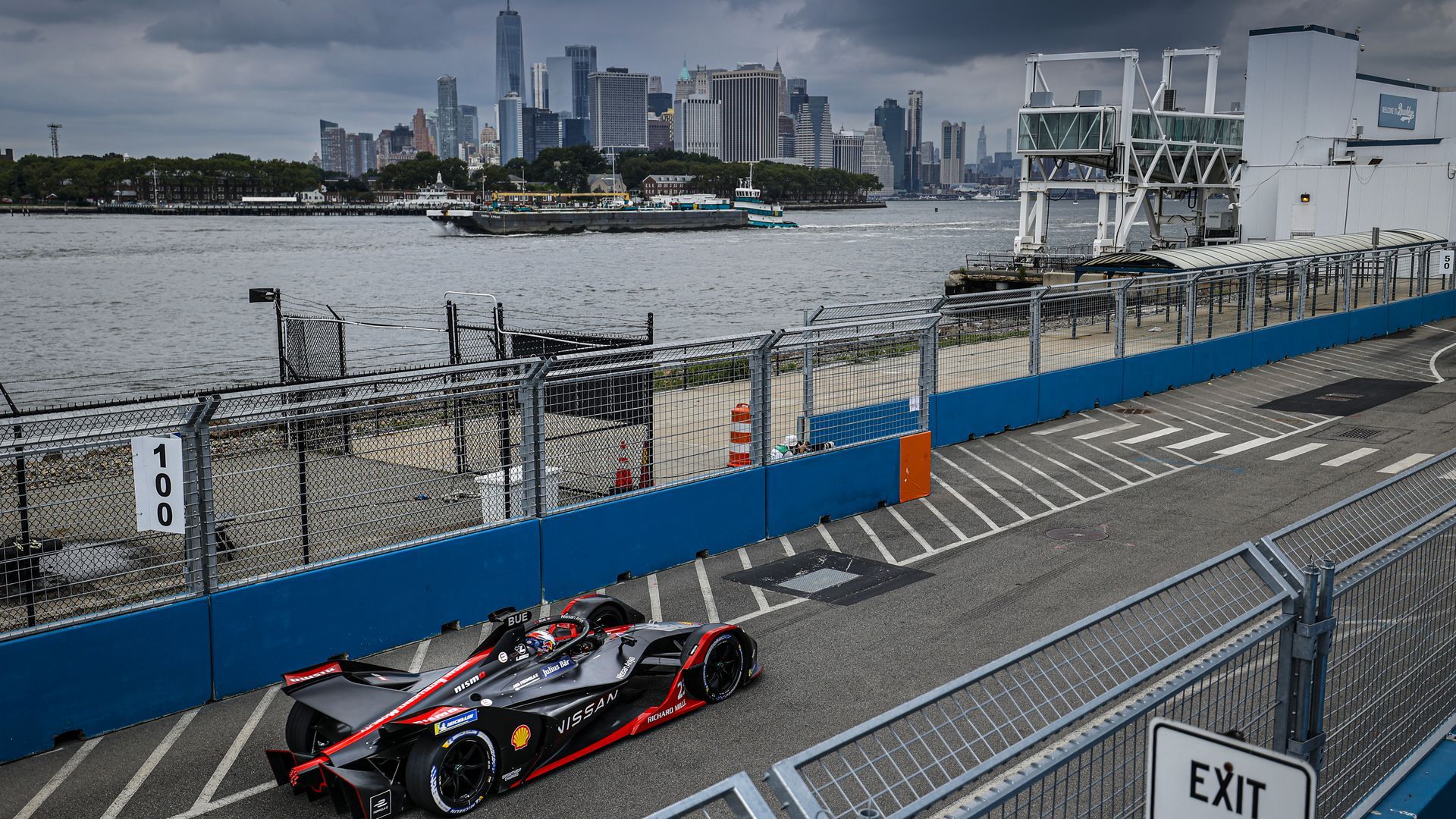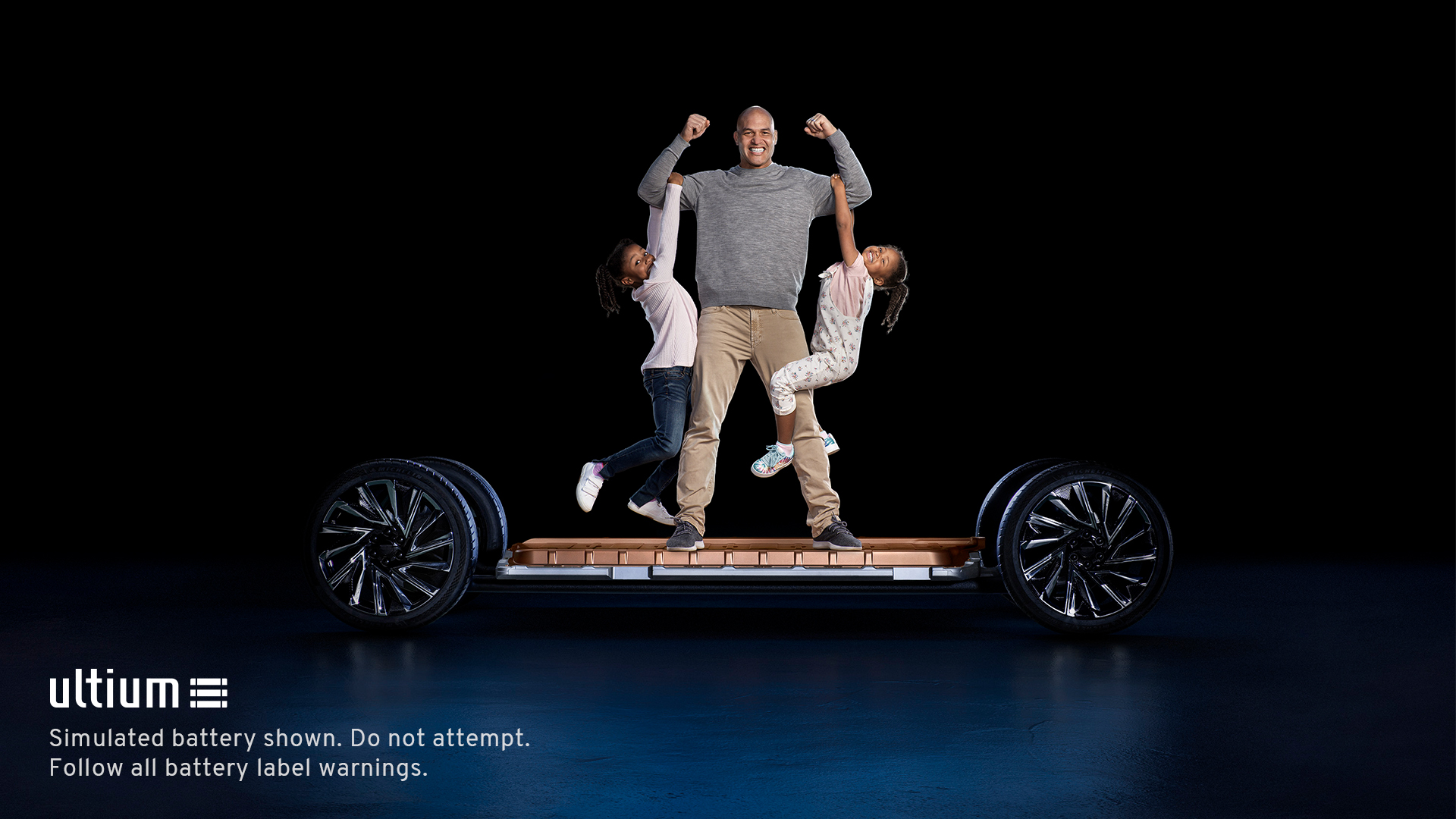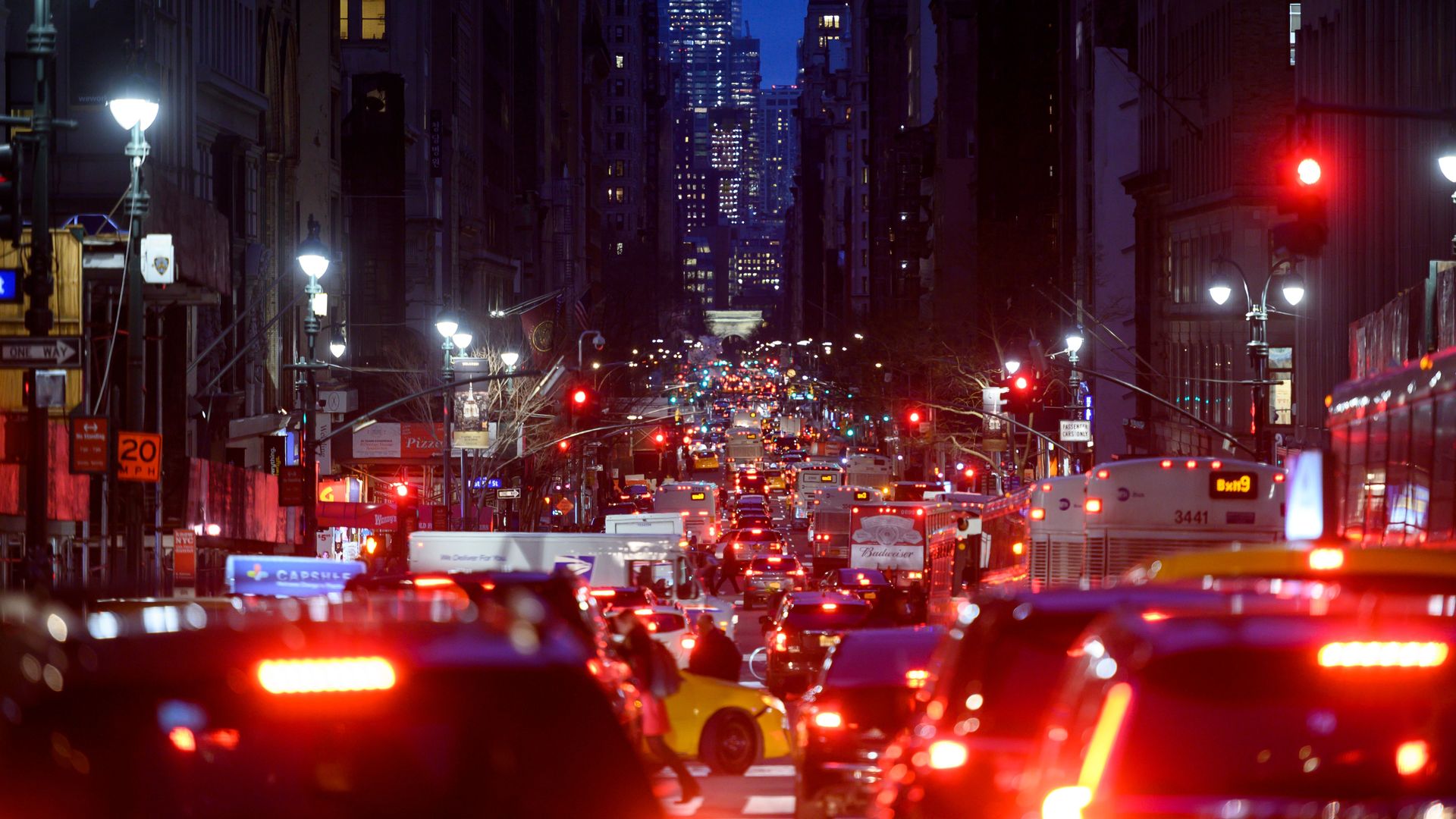| | | | | | | Presented By General Motors | | | | Axios What's Next | | By Bryan Walsh, Joann Muller and Erica Pandey ·Jul 12, 2021 | | It's Monday, and we're bringing you electric vehicles racing, robots walking, and cars (in New York at least) going nowhere. "What was next" trivia: On this day in 1960, what popular drawing toy was first produced? - Credit to reader Scott Davis for being the first to note that the winner of the 2002 MLB All-Star Game on July 9, 2002, was ... nobody. The game ended in a 👔.
- Send your answer, along with tips and feedback, to whatsnext@axios.com.
Today's Smart Brevity count: 1,316 words ... TK minutes. | | | | | | 1 big thing: How electric car racing could put a spark in EV sales |  | | | New York's Formula E race on Saturday. Photo: ABB FIA Formula E | | | | BMW's Maximilian Günther and Jaguar's Sam Bird captured the checkered flags at the thrilling New York City E-Prix racing doubleheader in Brooklyn over the weekend. But the real winners, race organizers hope, are electric vehicles themselves, writes Joann Muller. Why it matters: ABB FIA Formula E's all-electric street racing series, held in some of the world's most iconic cities, is meant to showcase EV technology in the very places electric cars are likely to have the biggest impact. - For auto manufacturers, it's also a test bed for innovation in sustainable mobility.
- "If we win and we are successful, we can show the world we are a step ahead on technology," Pascal Zurlinden, director of factory racing for Porsche AG, tells Axios.
Driving the news: New York is the only U.S. stop on this year's Formula E tour, now in its seventh season. As EV technology has advanced, the racing series has evolved too. - Batteries in the first generation of race cars lasted only 25 minutes, so teams had to swap cars midway through the race.
- The current generation of cars has a lightweight 250-kilowatt battery and a top speed of 174 mph, eliminating the need for pit stops during the 45-minute race.
- The entire 24-car field uses the same battery pack, which was designed and manufactured by Lucid Motors through its Atieva technology division.
Details: Each team designs the rest of the car's powertrain — things like the electric motor, inverter and gearbox — but the design can't change after the season begins. - The only permitted changes are software updates to optimize thermal management.
- To win, racers need to strike the right balance between power and efficiency — the same riddle that engineers designing standard EVs are trying to solve.
- Like race car drivers, EV owners can continually improve their vehicles through software updates too.
Context: Motorsports has long been a laboratory for future automotive technology. - Jaguar, for example, pioneered disc brakes at the 24 Hours of Le Mans race in 1953. Today, they are widely available on all vehicles.
- The British carmaker is already implementing lessons learned from Formula E racing, says James Barclay, team director of Jaguar Racing. A software update added 12 miles of extra range to the 2021 Jaguar iPace electric SUV, for instance.
The big picture: Transportation is the largest source of greenhouse gas emissions in the United States and a massive source worldwide. - Automakers are rushing to replace their gasoline-powered vehicles with electric models as governments tighten tailpipe emissions rules and companies face pressure to act on climate.
What's next: Formula E is growing, adding three new cities next year —Vancouver, Canada, Cape Town, South Africa, and Seoul, South Korea — as it expands to a record 16 races across four continents. - The technology continues to evolve too. Batteries in the next generation of race cars, coming in about 18 months for Season 9, will pack 350 kilowatts of energy into a smaller, lighter package, meaning even better performance.
The bottom line: Formula E is an exciting sport with sustainability built into its mission. Share this story. |     | | | | | | 2. Study: No clear link between gun sales spike and murder rise |  | | | Illustration: Lazaro Gamio/Axios | | | | A new study casts doubt on the idea that the historic spike in gun-related homicides last year was caused by a near equally sharp rise in gun purchases, writes Bryan Walsh. Why it matters: 2020 saw a sharp reversal in the general decline in homicides, and 2021 hasn't been much better. As gun violence once again becomes a major issue for cities and the federal government alike, there's a desperate need to untangle the causes. By the numbers: Researchers at the Violence Prevention Research Program at the University of California, Davis estimated there were 4.3 million excess firearm purchases — meaning above expected trends — from March through July 2020, and a 27% increase in firearm injuries over roughly the same time. Yes, but: Researchers found no clear association between more gun purchases and increased gun violence, other than a possible connection to an increase in domestic gun violence injuries during the first two months of the pandemic, when lockdowns were most severe. - The researchers note that it's possible that many, if not most, of the excess firearm purchases went to people who already owned guns, which would have blunted their impact on rising homicide rates.
- The study suggests "we need to be looking at other factors, like job loss, economic change, the closure of schools and community organizations and nonprofits, and civil unrest," Julia Schleimer, the lead author, told the Guardian.
The catch: National data on homicides is spotty and laggy — authorities won't know the full number of murders last year for months — and there is no conclusive database on gun purchases or who owns firearms in the U.S., all of which complicates connecting the dots. Read the rest. |     | | | | | | 3. A robot learns to walk, step-by-step | | Credit: Facebook AI Researchers have programmed an AI-controlled walking robot to adjust to changing terrain in real time, writes Bryan. Why it matters: Walking can be harder than it looks — just ask any toddler — so developing software that can enable a robot to learn to adapt to an uncertain environment represents a step forward to helping the machines operate in the real world. How it works: A team from Facebook AI, Carnegie Mellon University and the University of California took a four-legged robot from the Chinese startup Unitree and first trained it on a computer simulation of a variety of surfaces. - They then tested the robot — which had no computer vision and could only operate by feel — in the real world, showing how it could adjust to changing terrain in much the way a human could.
- By the end, it was successful in 70% of the trials when it had to walk down stairs on an uneven hiking trail.
The bottom line: Learning over time to operate in the uncertain real world can make robots more useful for real-world applications like search and rescue. |     | | | | | | A message from General Motors | | An EV for everyone | | |  | | | | General Motors is adding 30 new electric vehicles and producing the revolutionary Ultium Platform. The background: This is made possible by a $35 billion investment in EVs and AVs through 2025 to make the all-electric future accessible for everyone. | | | | | | 4. How hybrid work increased one company's energy footprint |  | | | Image: Ubisoft | | | | Working from home increased the energy consumption per employee at gaming giant Ubisoft to 3,882 kilowatt hours per employee last year, up from 3,064 in 2019, according to a company filing, Stephen Totilo writes. Why it matters: The change demonstrates the challenge of a company trying to lower its carbon footprint while modernizing its approach to work. - Ubisoft attributed the increase to the need to power Ubisoft's facilities, even when less staffed, while workers also used energy at home.
- On the other hand, COVID-19 restrictions cut travel's portion of the company's carbon footprint from 25% in 2017 to 2% in 2020, though the company expects those to increase.
The big picture: Ubisoft has pledged to reduce emissions by 8.8% per employee by 2023. - It has also committed to letting most workers split their time between working from home and the office.
Read the rest. |     | | | | | | 5. Number of the day: 56 hours |  | | | New York City evening rush-hour traffic. Photo: Johannes Eisele/AFP via Getty Images | | | | That's the number of hours the average driver in the New York region spent in traffic last year, according to the annual mobility report released this month by the Texas A&M Transportation Institute, writes Bryan. - It's the highest in the nation, surpassing Los Angeles for the first time in nearly four decades.
By the numbers: The region's commuters produced 494,268,000 hours of gridlock, some 30% more than any other urban area. Between the lines: While the growth of truck traffic plays a role, a major factor was the pandemic pushing wary New Yorkers out of subway cars and buses and into personal vehicles. - While most other metro areas saw traffic fall by two-thirds last year, by last October congestion in New York was back at pre-COVID levels.
- Weekday subway ridership is still nearly 60% below its average before the pandemic.
The bottom line: New York also ranked No. 1 in the commuter stress index, which models excess traffic at peak periods. |     | | | | | | A message from General Motors | | An EV for everyone | | |  | | | | General Motors is adding 30 new electric vehicles and producing the revolutionary Ultium Platform. The background: This is made possible by a $35 billion investment in EVs and AVs through 2025 to make the all-electric future accessible for everyone. | | |  | | It'll help you deliver employee communications more effectively. | | | | | | Axios thanks our partners for supporting our newsletters. If you're interested in advertising, learn more here.
Sponsorship has no influence on editorial content. Axios, 3100 Clarendon Blvd, Suite 1300, Arlington VA 22201 | | | You received this email because you signed up for newsletters from Axios.
Change your preferences or unsubscribe here. | | | Was this email forwarded to you?
Sign up now to get Axios in your inbox. | | | | Follow Axios on social media:    | | | | | |










No comments:
Post a Comment